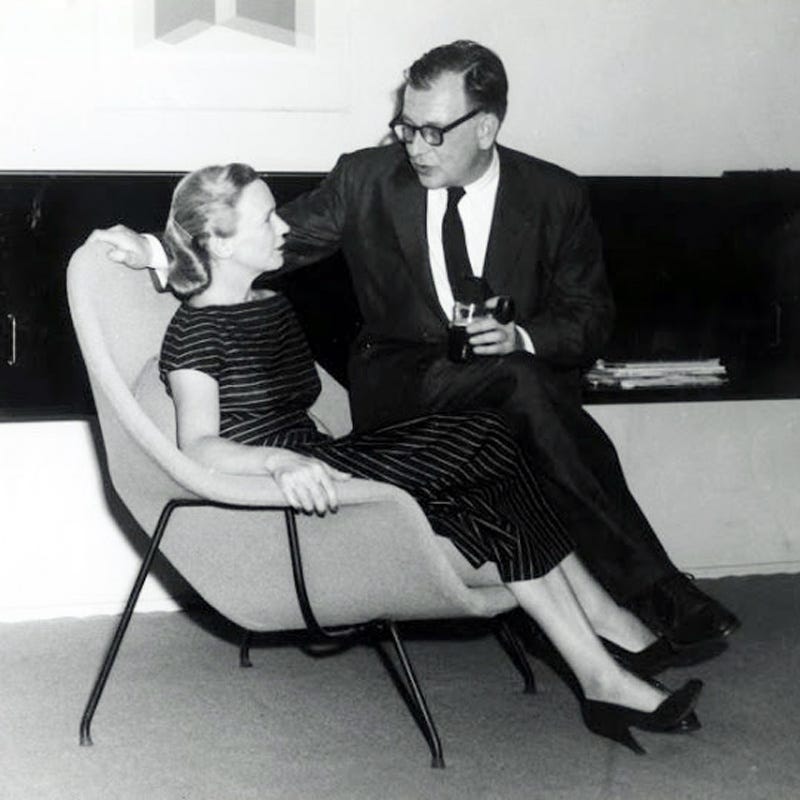Knowing about Art Deco, Mid-Century Modern, or Postmodern Contemporary iconic furniture pieces is not just something for architects or interior designers, nor limited to fanatics of these subjects— in many cultures and to many individuals, knowing certain key pieces that were brought about by different design movements and periods is actually viewed as invaluable cultural knowledge.
Just like literature and music — design, and especially furniture design, is an intrinsic part of all human cultures. The course and span of human civilization is actually often times marked and classified by art movements. Of course, periods and styles flow together and sometimes merge with one another — there is no clear or precise line or date that can be attributed to these — but, in general, in the western culture for instance, we recognize some of these periods as Prehistoric, Classical, Byzantine, and so fourth.
Since the beginnings of civilization, humans have been seeking ways to design everyday objects, from chairs to lamps to cutlery, in ways that help transmit different feelings—like simplicity in design can help evoke a sense of order and calmness, intricacy in design can help convey a sense of uniqueness and thus, a sense of opulence as well. In this piece of writing, I want to touch upon certain iconic pieces of furniture that I have come across in my life, and in my readings, to help educate and serve as reference of knowledge, on some of the most renown and important furniture designers and designs throughout the past few decades.
Eero Saarinen
Starting with my personal favorite, two pieces from Finnish-American architect and industrial designer Eero Saarinen must be mentioned.
The Womb Chair
In 1948 Saarinen designed the Womb Chair as per requested by Florence Knoll, iconic American architect, and furniture designer too. Knoll had asked for “a chair that was like a basket full of pillows”, and which would provide the kind of comforting calmness that the chair’s name appropriately emphasizes.
The Tulip Dining Table and Chairs
Another Saarinen piece that would become iconic was his 1956 Tulip Dining Table and the its complementary Tulip Dining chairs (with and without armrest). Saarinen wanted to rid the common chair of its legs and instead make the chair “one whole thing again”.
Sergio Rodrigues, the Diz Chair
Sergio Rodrigues was a Brazilian architect and designer from Rio de Janeiro — and one of the pioneers to transform the Brazilian design that is now renown worldwide. In 2002, Rodrigues designed the “Diz” armchair that bridges between comfortable and aesthetic design.


Isamu Noguchi, the Noguchi Table
Japanese American artist and industrial designer Isamu Noguchi designed the Noguchi table in 1939 for A. Conger Goodyear, president of the MoMA. Because of its impressive design and success, it was quickly thereafter produced by Herman Miller for both residential and office environments and has now become a renown creation.


Finn Juhl, the Model 45 Chair
Finn Juhl was a Danish architect, interior and industrial designer who has acclaimed fame through his now-renown furniture designs. In the Automn of 1945, Juhl presented the 45 Chair to the annual Cabinetmakers’ Guild Exhibition. Now, the chair has become and emblem of Danish furniture design and a luxury that many want in their living rooms.
Ludwig Mies van der Rohe, the Barcelona Chair
Designed for the German Pavilion at the International Exposition of 1929, in Barcelona, Spain, the Barcelona Chair has become one of the most celebrated designs of the 20th century, and one of German-American Architect Ludwig Mies van der Rohe’s most famous creations.

Pierre Jeanneret
Pierre Jeanneret was a swiss Architect best known for his work with cousin Charles-Edouard Jeanneret (Le Corbusier) in Chandigarh, India. In recent years, there seems to have been a re-discovery of Jeanneret’s pieces, with collectors showing increased interest and the demand for Jeanneret pieces, and for replicas of these pieces, rising simultaneously.
The Office Cane Chair
One of Jeanneret’s most iconic pieces is the “Office Cane Chair” designed in Chandigarh in 1955. Today, collector pieces of this office chair can be found in collector markets, but it is its replicas that are being sold by the masses.
The Kangaroo Lounge Chair
Equally as celebrated is Jeanneret’s 1955 Kangourou Chair that, evident from its design, belongs to the same Chandigarh collection as the Office Cane Chair.

Lina Bo Bardi’s Bowl Chair
Lina Bo Bardi was an Italian born Brazilian modernist architect who devoted her life and practice to Brazilian design. One of Bo Bardi’s most iconic creations is her Bowl Chair, designed in 1951 — an emblem of her “adaptive” style. Indeed, the modular bowl and base components of the chair can be positioned to perform many functions and enable many seating positions.
The black leather version of the Bowl Chair is Bo Bardi’s original 1951 creation, but, in recent years, reproductions of the chair have been made in a variety of colors — by Arper and the Instituto Lina Bo e P.M. Bardi — that follow the spirit of the design and the sketches left behind.

Charles and Ray Eames, the Eames Lounge Chair
American architect and designers Charles and Ray Eames developed their famous Eames Lounge Chair, and the matching Ottoman, in 1956. Chalres’ idea was to create an updated version of the “old English club chair”. The chair has since become a “classic in the history of modern furniture” and is a renown piece around the world — easily recognizable by its elegance and uniqueness of style.

While this list is a rather short one, and excludes many other noteworthy icons of design, I wanted to attempt to briefly list some of the amazing architects, interior and industrial designers, that have marked the world of design with their respective creations.
It is hard to pin-point exactly what has made each of these stand the test of time — but in my opinion, these pieces are each undeniably brilliant.
























